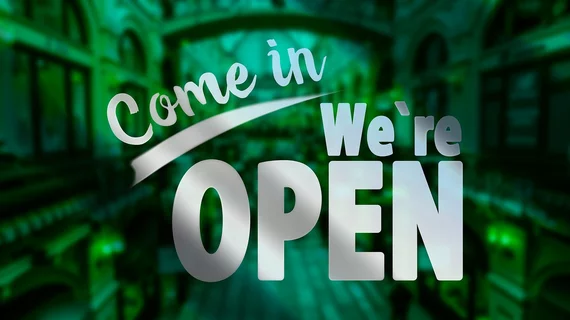How one radiology department ‘recovered wisely’ to bounce imaging numbers back near pre-COVID levels
As radiology providers attempt to recapture their normal care volumes prior to the pandemic, one hospital imaging department is sharing how it has “recovered wisely” from the crisis.
University of Cincinnati Health deployed a data-driven, team-based approach to resuming nonurgent radiology services after it sustained a “sharp,” systemwide decrease in such care between 53%-55%. By week 10 of the program, the health system was already witnessing a rebound to 102%, leaders explained Monday in Academic Radiology.
“Longer term recovery planning needs to include the possibility of a second or seasonal surge of COVID-19. However, the principles of Recover Wisely should apply to any rescheduling and recovery strategy,” Achala Vagal, MD, with the UC Health Department of Radiology, and 15 co-authors wrote Aug. 10. “In the dire situation, if a large-scale shutdown occurs again, other departments will find our experience and resumption strategies helpful,” the team added later.
Vagal et al. first detailed their approach a few months ago in JACR, explaining how they systematically rescheduled 30,000 imaging appointments when the crisis hit. In this follow-up, the team explored early successes and lessons learned at the two-hospital system, which operates five freestanding imaging centers.
UCH launched the Recover Wisely program on May 4, utilizing scheduling simulations and “meticulous monitoring and control” of its imaging volumes to help restore care in a safe and linear fashion. And they devised a tiered plan to begin working through the enormous backlog and gradual reopening of centers, Vagal and colleagues noted. All the while, they kept in contact with both patients and referrers to share updates.
As the process gained steam, UCH steadily gained about 172 cases per week, hitting an overall recovery of 102% by week 10 compared to weekly pre-COVID volumes. Some modalities bounced back better than others with MRI (101%), interventional radiology (106%), CT (113%), and nuclear medicine (138%) the brightest spots.
All told, the hospital system’s imaging volume was down about 11% from May 4 to July 10 when compared to the same period last year. And weighted relative value units were about 8% lower than 2019 levels, Vagal and colleagues wrote.
As the University of Cincinnati Health’s region and state grappled with increased COVID positivity rates at the time of writing the analysis, their team continued closely monitoring data, they added. But they believe the early lessons learned of tailored communication, cross-disciplinary teamwork and “innovative solutions” will help to guide them for whatever may come next.
“Long-term COVID-19 recovery will require resilience and strategic planning,” the authors concluded. “The post-COVID care will be different and will include a remote workforce, abbreviated imaging protocols, online registrations and virtual waiting rooms. Although the pandemic is an unprecedented crisis, it provides a unique opportunity for us to rethink our healthcare operations and create radically different care models for the ‘new normal.’”
You can read much more about UC Health’s Recover Wisely program in Academic Radiology here, and their original May analysis in JACR here.

